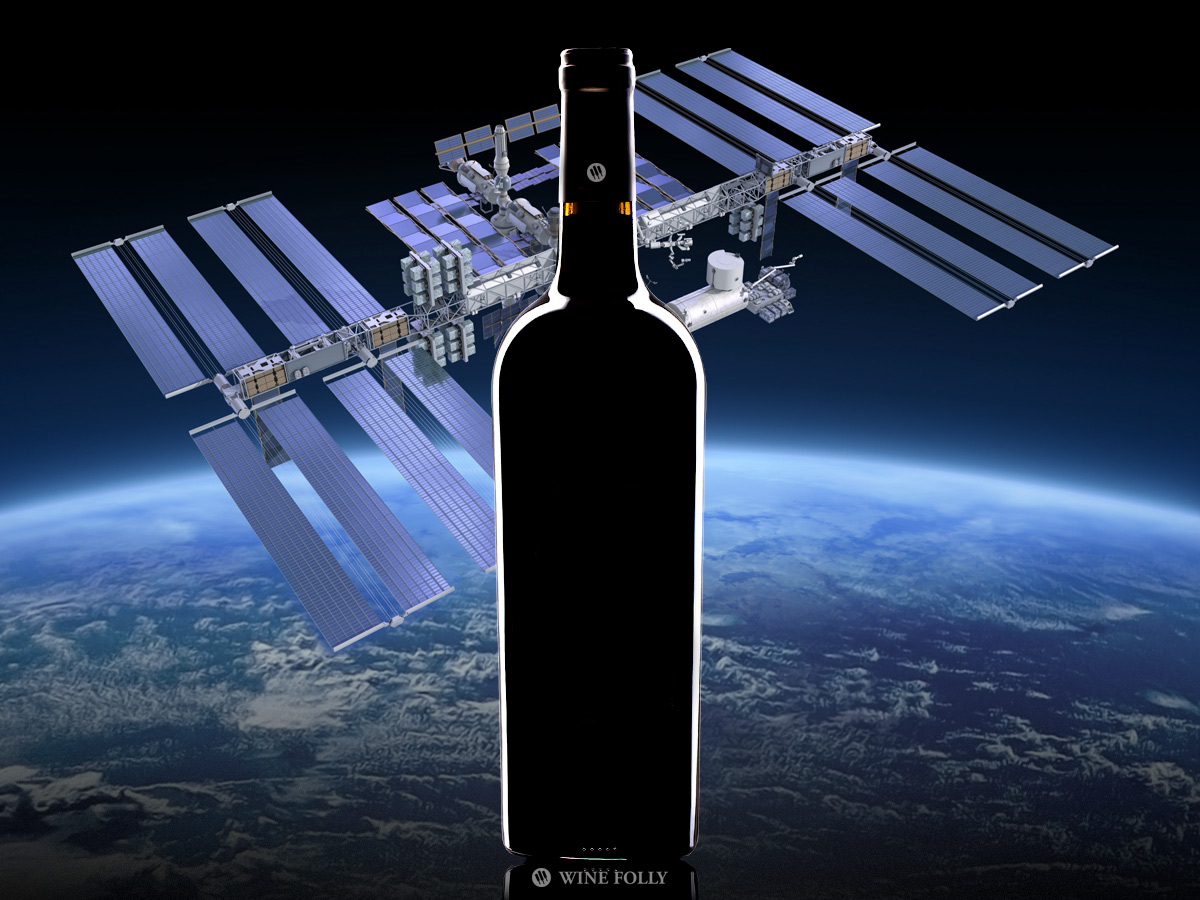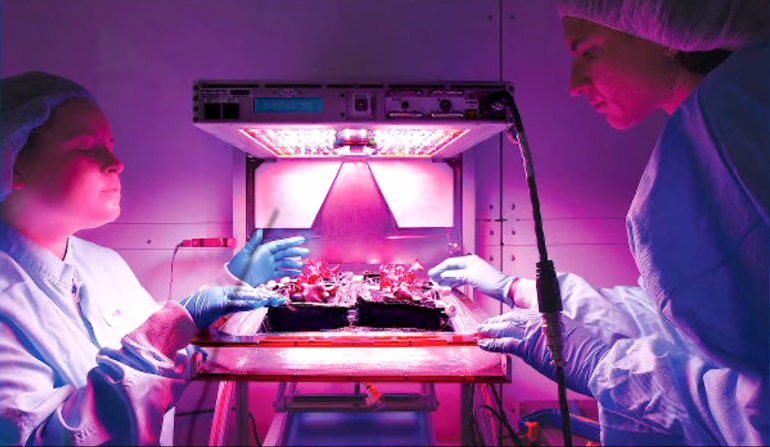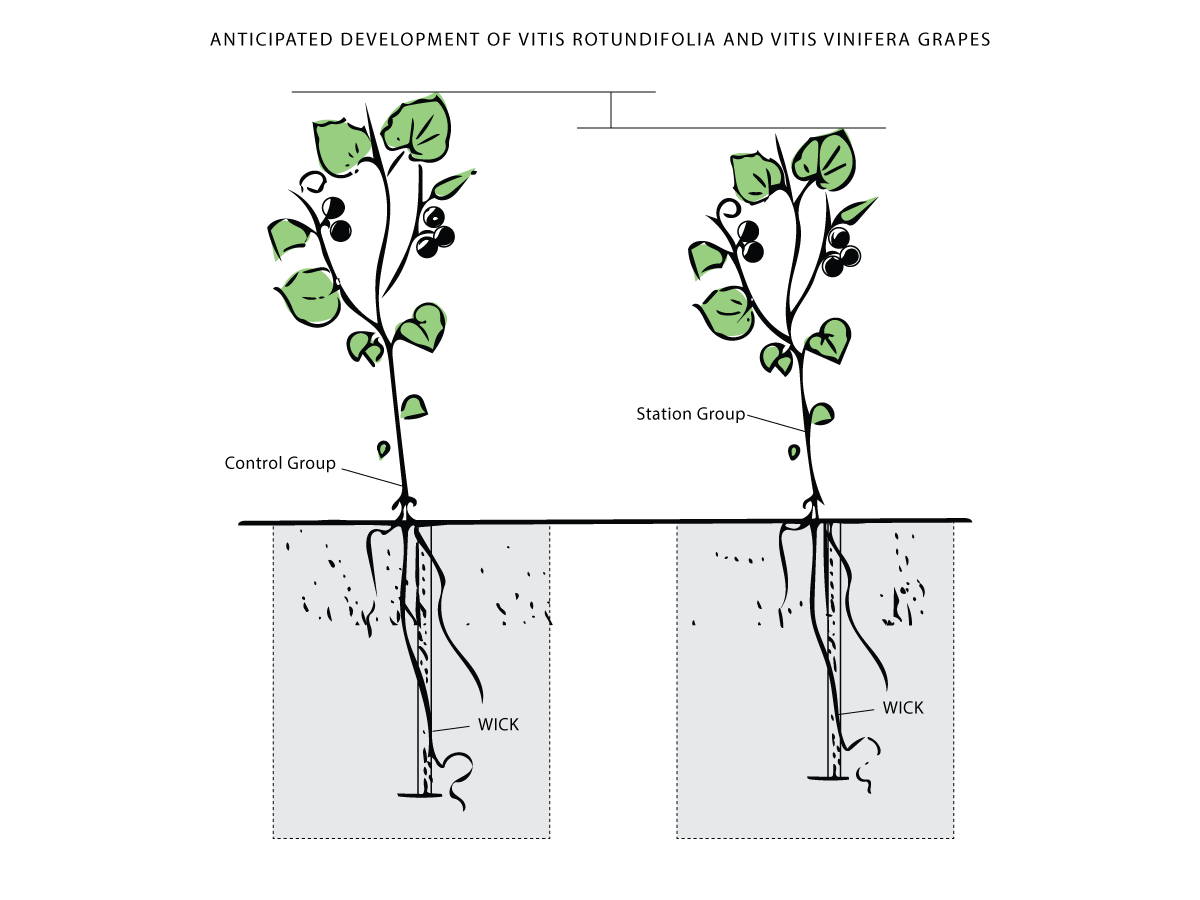Plans are in the works to deliver wine grape seed kits on SpaceX’s next commercial resupply mission to the International Space Station (ISS). The launch of SpaceX Dragon is planned to occur April 13th according to NASA.
“When we leave Earth’s orbit, we’re going to take plants with us. We are explorers; it’s what we do as a species”
–Anna-Lisa Paul, Ph.D., Molecular biologist on NASA’s TAGES experiment team
Wine Grapes Headed into Outer Space

Which is better a SuperTuscan or a SuperGalatic?
Why would teetotaling astronauts want to grow wine grapes? Well, they might actually be the perfect plants for space travel! Grapes require less water than rice or soy, and they produce high potency fruit with very little waste.

The space plant container used for the Veggie Experiment was created by Orbital Technologies Corp.
Which Wine Grapes Will Be The First to Space?
The question we wine drinkers all want to know is “which wine grapes made the cut!” Before imagining a glass of bold red “Space Cabernet,” you should know that the molecular biologists had different reasons for their top picks. The researchers selected two Vitis vinifera varieties: Muscat of Alexandria and Touriga Nacional (a Portuguese grape), and the native-to-Florida supergrape, Scuppernong, a Vitis rotundifolia.
Each grape was selected for specific health benefits. Scuppernongs were selected because it’s one of the only grapes known to naturally contain cancer-killing ellagic acid. Muscat of Alexandria was chosen for being one of the most ancient grapes, treasured for its naturally high sugar content, and Touriga Nacional was picked for its exceptionally high anthocyanin (red pigment).

Researcher’s illustration of grape growth on Earth vs Space source
BioTech on the International Space Station
The grapes will be grown in “Veggie,” which is the International Space Station’s largest (and newest) plant growth chamber. The chamber is unlike the other plant terrariums on the Russian Zvezda module because it’s designed to be open and easy for the crew to interact with and observe. The module uses 3 colors of LED’s including red, blue and green. While plants only need red and blue lights, Dr. Gioia Massa, the lead researcher on the project, said that the addition of the green light was for the astronauts.
Things to Know About Plants in Outer Space
This is a truly ambitious project when you take a look at what’s happened so far…
- circa 1990
- Research begins on the study of plants in outer space.
- 2002
- The Lada Validating Vegetable Production Unit a.k.a. “the Lada greenhouse” is developed and activated in the Zvezda module on the Russian part of the International Space Station.
- 2005
- Space grown plants from Lada greenhouse space plants are deemed “safe to eat.”
- 2009
- An experiment called TAGES begins on ISS to study how plants grow in outer space.
- 2012
- A study reveals that gravity isn’t essential for plant root orientation. This finding is based on TAGES experiments.
- May 8, 2014
- Astronaut Steve Swanson activates “Veg-01” or Veggie, a space plant growth system brought to ISS by SpaceX on Expedition 39.
- June 12, 2014
- Dr. Gioia Massa, lead on the Veggie science team, is interviewed on Youtube about her work studying plant growing systems in space.
If you’ve made it this far in the article, you are no doubt delighted, astonished and excited for what we can achieve together as a species. If you still can’t believe it’s true, you should definitely take a look at this.
Sources
Dr. Gioia Massa talks about Veggies Space plant program on Youtube
The TAGES experiment details, a fascinating study lead by Dr. Anna-Lisa Paul
A Youtube video showing the findings on TAGES
The actual study showing that plants grow normal roots without gravity
Information about the Lada Greenhouse on NASA
Information about the SpaceX commercial resupply mission to happen no earlier than April 10th, 5:42pm
